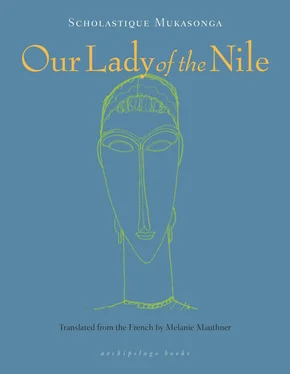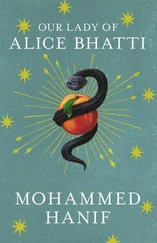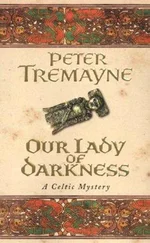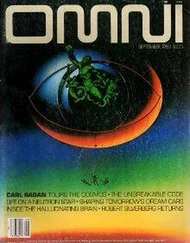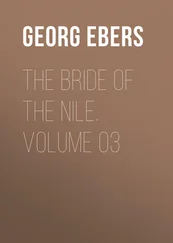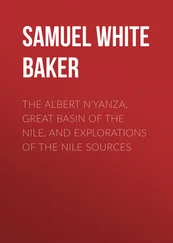It was the tales told about the Tutsi that convinced him. That they weren’t Negroes: one only had to look at their noses, and the reddish gleam of their skin. But where did they come from? The mystery of the Tutsi ate away at him. He’d gone and questioned the old bearded missionaries. He’d read everything there was to read on the subject. Nobody agreed on anything. One said the Tutsi came from Ethiopia, another that they were black Jews of some kind, or emigrant Copts from Alexandria, perhaps Romans who’d gotten lost, maybe cousins of the Fula or the Maasai, Sumerian survivors of Babylon, some even said they’d come all the way from Tibet, true Aryans. Fontenaille swore to himself that he’d find out the truth.
When the Hutu kicked out the head Mwami of Rwanda and began to massacre the Tutsi, with the help of the Belgians and the missionaries, he understood how urgent it was that he fulfill the promise he’d made to himself. It would now be his life’s mission. The Tutsi would disappear, of that he was certain. Here they would eventually be exterminated, while those who had gone into exile would ensure their own people’s decline through interbreeding. All that could be saved was the legend, the legend that was the truth. So he neglected his friends and abandoned the plantation. He learned to decipher hieroglyphs. He attempted to study Coptic and Ge’ez. He tried to speak Kinyarwanda with his servant. But he was clearly no scholar, or anthropologist, or ethnologist. All those books, all those studies, led nowhere. For he was an artist, intuition and inspiration were his only guides, and they took him much further than all these scholars with their erudition. So he decided to continue his research in the field, in Sudan and in Egypt. There he saw the goddess’s temple before it was swallowed by the desert, and he saw the pyramids of the black pharaohs, the steles of the Candace queens by the Nile. That’s where he found the proof he sought. Those faces carved in stone were the same as those he had sketched. All his doubts were gone. It was like an epiphany. The empire of the black pharaohs, that was exactly where the Tutsi came from. Chased off by Christianity, by Islam, by desert barbarians, they undertook the long trek to the source of the Nile, which they believed to be the land of the Gods who, by virtue of the river, bestowed plenty. They had kept their cows, their sacred bulls, and their noble bearing, their daughters had kept their beauty. But they had lost their Memory.
He, Fontenaille, was now going to fulfill his mission. He had abandoned everything for her. He had rebuilt the goddess’s temple, and the pyramid of the black pharaohs. He had painted the goddess, and Candace, the queen. “And you,” he said, “because you are beautiful, because you look like them, you will get your Memory back, thanks to me.”
Monsieur de Fontenaille led them to his workshop. With some difficulty, they weaved their way through the stacks of boxes of drawings. There, on an easel, was a sketched portrait.
“But that’s you, Veronica,” said Virginia.
“Yes,” said Monsieur de Fontenaille. “That is indeed our goddess, but you’ll see her better in her temple.”
The walls were hung with reproductions and photographs of frescoes, bas-reliefs, and steles depicting black pharaohs on their thrones; gods with falcon heads, jackal heads, crocodile heads; goddesses crowned with solar discs and cattle horns. Monsieur de Fontenaille paused before a large map of the River Nile. Veronica noticed that none of the place-names on it matched those she had read in her geography book.
“That’s Philae, the temple of the Great Goddess,” explained Monsieur de Fontenaille. “And there, that’s Meroë, capital of the Kush, the empire of the black pharaohs, of the Candace; capital of a thousand pyramids. I’ve been there for you, the Tutsi, and I found you there. Here, I’ll show you.”
He handed her a sheet from one of the boxes.
“It’s your portrait. I did it based on the rough sketches I made at the pilgrimage. And now I’ll set it next to this photo I took at Meroë. It shows Isis, the Great Goddess, spreading her wings to protect the kingdom. Her breasts are bared. Look closely at her face, it’s your own, to the last detail. Someone did your portrait in Meroë three thousand years ago. This proves it.”
“But I wasn’t around three thousand years ago, I don’t have wings, and the kingdom is gone.”
“Just wait and see, you’ll soon understand. Now we must go to the temple.”
“Veronica,” said Monsieur de Fontenaille, “when you came to the temple for the first time, you probably didn’t take in my fresco well. Look closely at the faces of the young women bringing offerings to the Great Goddess, don’t you recognize some of them?”
“Oh, yes,” said Virginia, “the third one there, that’s me! And the one just in front of her is Emmanuella, who was in her final year a couple of years ago. And there’s Brigitte, who’s in tenth grade. It’s like he’s painted every Tutsi in the lycée.”
“Well, I’m not there.”
“You’re not in the procession because you’re the chosen one. Turn around and you’ll see,” said Monsieur de Fontenaille.
There on the back wall, the face of the Great Goddess was indeed that of Veronica. Only the eyes were strangely large.
“You see,” said Monsieur de Fontenaille, “last Sunday, I had ample time to observe you closely. Then I corrected the face of the goddess so it really looks like yours. Now you can no longer deny it: you are Isis.”
“I am no such thing. I don’t like you making fun of me. And it’s dangerous to mock the spirits of the dead. The abazimu might turn on you, and their vengeance is often cruel.”
“Don’t be upset. Soon you’ll understand. Follow me, the tour’s not over yet.”
They exited the temple and climbed up to the ridge. A few long-horned cows were grazing on the slope, watched by young herders. On a nearby hill lay the enclosure where the cattle returned every evening. The dome of the main hut, with its artistically plaited tuft, rose above the encircling corral of shrubs. “See,” said Monsieur de Fontenaille, “if the Tutsi were to disappear, I would at least save their cows, the inyambo . Perhaps it was a bull like that one there, a sacred bull, who led them as far as here.” At the summit, in the midst of a thicket of old trees, like a slice of forest, stood a pyramid, taller and more tapering than the one erected by the Belgians at the source of the Nile. “That’s where I made excavations,” he explained. “The elders said it was the grave of a queen, Queen Nyiramavugo. So I ordered a dig and we found a skeleton, pearls, pottery, and copper bracelets. I’m no archaeologist. I didn’t want the Queen’s remains ending up in a museum, behind glass. So I had them fill in the trench and build this pyramid on top of it. Queen Nyiramavugo has a sepulcher befitting a Candace queen. Come here, Virginia, since from now on you, too, are queen, Queen Candace. Make whole the chain of time once again. Now everything is in place. The temple, the pyramid, the sacred bull. And I’ve rediscovered Isis and Candace, as beautiful as the day the world was formed. The ending will be as the beginning. That is the secret. Isis has returned to the spring. I have the secret, the secret, the se …”
Monsieur de Fontenaille seemed to be having great difficulty containing the exaltation that overwhelmed him, his hands shook, his throat was tight. To calm down, he went and sat on a rock a little way away, and spent a long while contemplating the rolling mountains that seemed to soar to infinity beneath the clouds.
“I don’t think he even sees the same landscape as we do,” said Veronica. “He probably fills it with goddesses, Candace queens, and black pharaohs. It’s like a movie playing in his head, but now he wants flesh-and-blood actresses, and that’s us.”
Читать дальше
